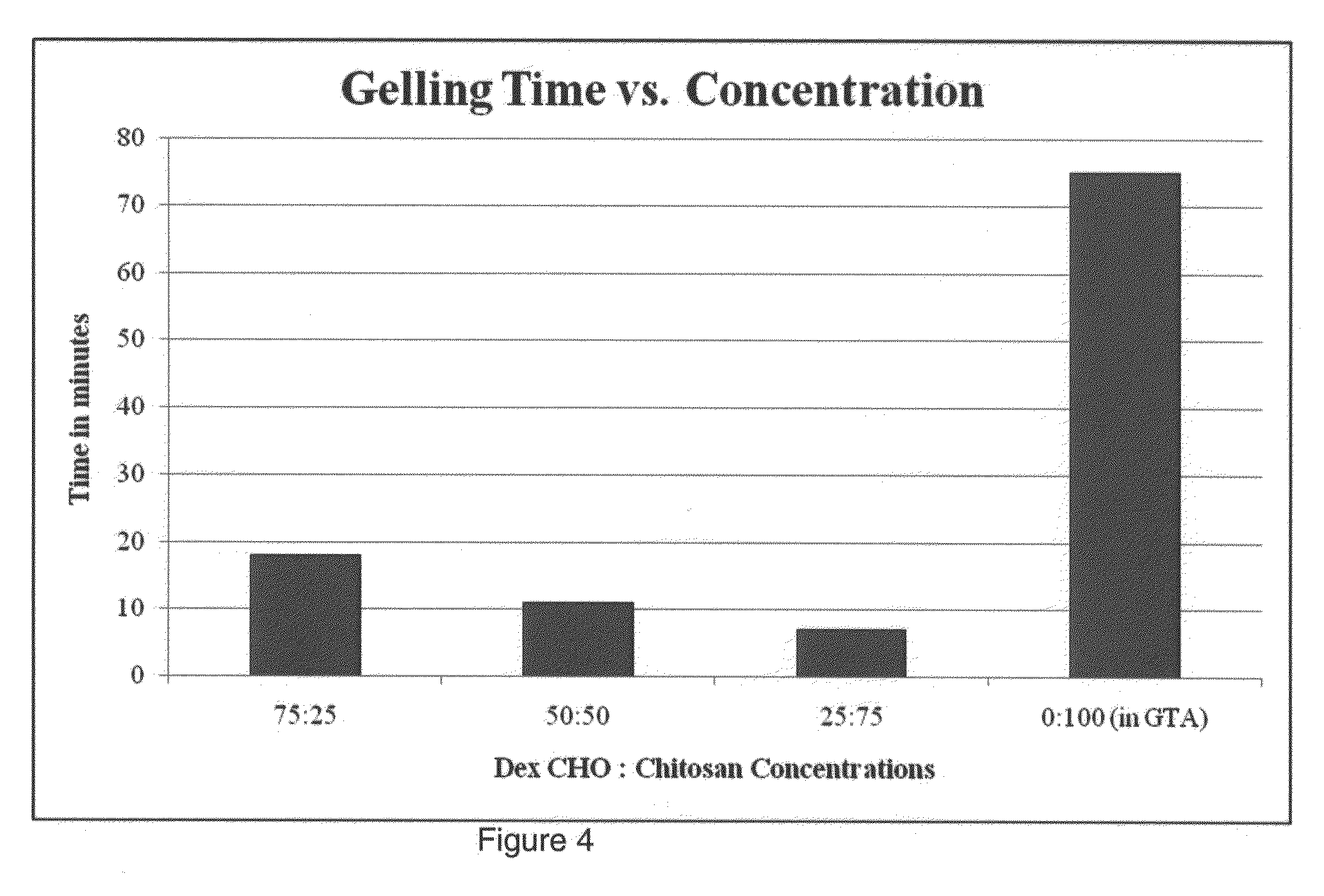Dextran-chitosan based in-situ gelling hydrogels for biomedical applications
- Summary
- Abstract
- Description
- Claims
- Application Information
AI Technical Summary
Benefits of technology
Problems solved by technology
Method used
Image
Examples
Embodiment Construction
[0038]Embodiments of the present invention include hydrogels that comprise dextran and chitosan, which may be chemically modified as needed for specific applications. Such hydrogels have the property of being self-gelling, allowing in-situ formation of hydrogels within 3-10 minutes, depending on the ratio of dextran to chitosan. Therefore, surfaces can be uniformly coated with solutions of the hydrogel components which will then gel quickly to form a barrier coating. Once the coating has formed, the hydrogel discourages cells, proteins and bacteria from attaching to the coated surface, thus retarding biofilm formation. However, when cells are added to the solutions prior to gelling, along with an appropriate growth medium, they are encapsulated into the hydrogel and, therefore, stay alive and aid in the production of a matrix for host integration and tissue re-growth. Another major advantage of the system is that it involves an in-situ gelling mixture, which, if processed prior to g...
PUM
| Property | Measurement | Unit |
|---|---|---|
| Mechanical strength | aaaaa | aaaaa |
| Mechanical strength | aaaaa | aaaaa |
| Mechanical strength | aaaaa | aaaaa |
Abstract
Description
Claims
Application Information
 Login to View More
Login to View More - R&D
- Intellectual Property
- Life Sciences
- Materials
- Tech Scout
- Unparalleled Data Quality
- Higher Quality Content
- 60% Fewer Hallucinations
Browse by: Latest US Patents, China's latest patents, Technical Efficacy Thesaurus, Application Domain, Technology Topic, Popular Technical Reports.
© 2025 PatSnap. All rights reserved.Legal|Privacy policy|Modern Slavery Act Transparency Statement|Sitemap|About US| Contact US: help@patsnap.com



